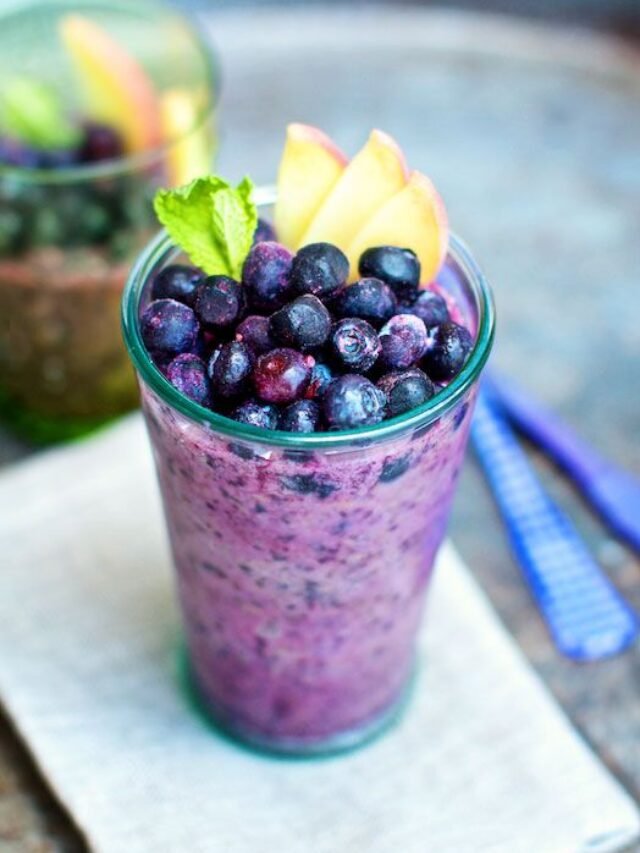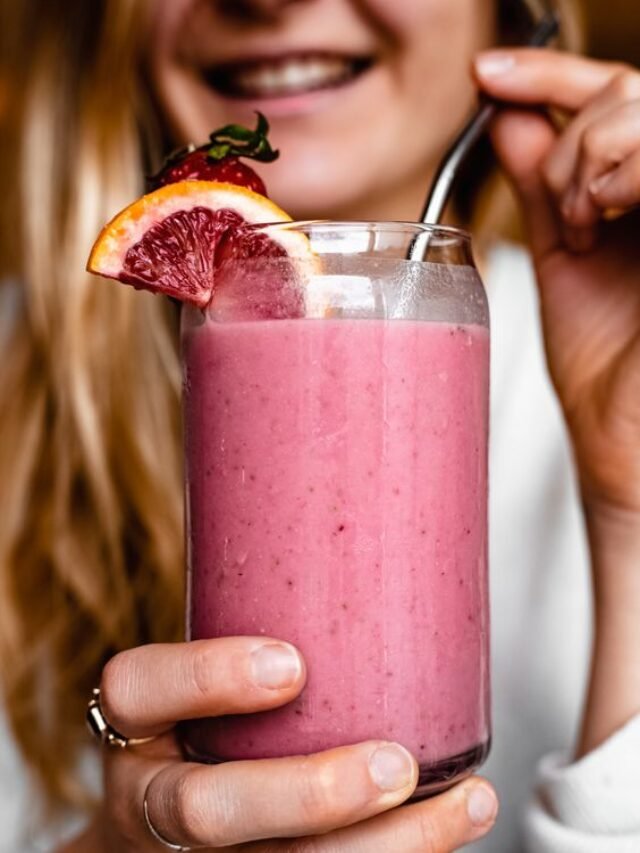Fermented vegetables are not just delicious; they are a powerhouse of nutrition and a testament to the marvels of microbial transformation. From the tangy crunch of sauerkraut to the fiery kick of kimchi, fermented veggies offer a symphony of flavors and health benefits. In this culinary journey, we’ll explore some of the best recipes for crafting your own fermented vegetables at home. So, roll up your sleeves, gather your ingredients, and let’s delve into the art of fermentation.
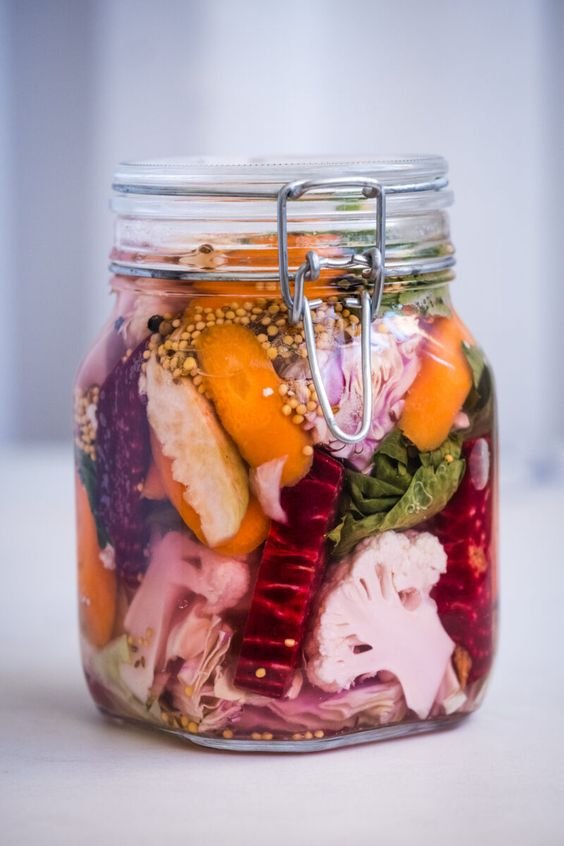
- Looking for more recipes like this one ? Don’t miss this-
- Vegan mayo recipe oat milk
- The Best Ever Vegan Fruit Cake
- How to make Pineapple upside down cake with cake mix
- Banana Bread Recipe with Sour Cream
- Smitten Kitchen Banana Bread Chocolate
How to make Best Fermented Vegetable Recipes
Classic Sauerkraut:
Sauerkraut, the king of fermented cabbage, is a staple in many cuisines.
To make your own, finely shred a head of cabbage and massage it with salt until it releases its juices.
Pack the cabbage tightly into a jar, ensuring there’s enough liquid to cover it.
Let it ferment at room temperature for about a week, then transfer to the fridge.
Enjoy this tangy delight as a side, on sandwiches, or as a topping for hot dogs.
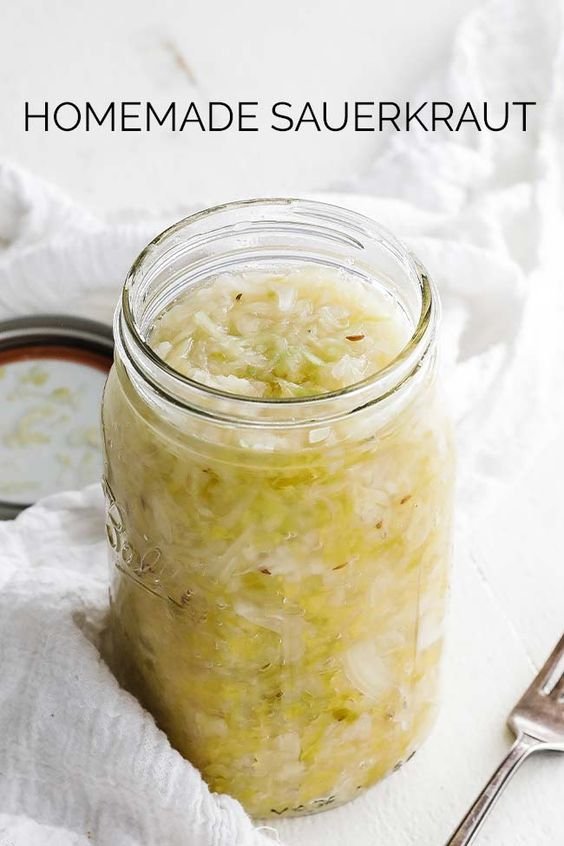
Kimchi:
Kimchi, the beloved Korean side dish, is a spicy and pungent delight.
To prepare, mix shredded napa cabbage, daikon radish, carrots, garlic, ginger, and chili flakes.
Massage with salt and let it sit for a couple of hours. Pack the mixture into jars, pressing down firmly to remove air bubbles.
Allow it to ferment at room temperature for 2-5 days before refrigerating.
Kimchi adds a burst of flavor to rice dishes, soups, and stir-fries.
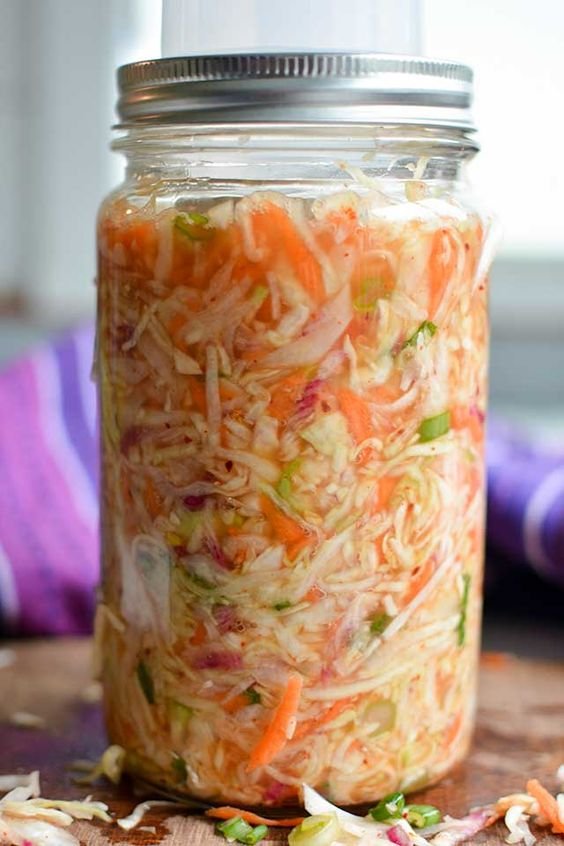
Fermented Carrots:
For a sweet and tangy twist on fermentation, try pickling carrots.
Slice carrots into sticks or rounds and pack them into jars with garlic, dill, and peppercorns.
Prepare a brine using water, salt, and vinegar, then pour it over the carrots, ensuring they’re fully submerged.
Seal the jars and let them ferment at room temperature for about a week before transferring to the fridge.
These vibrant carrots are a perfect addition to salads and antipasto platters.
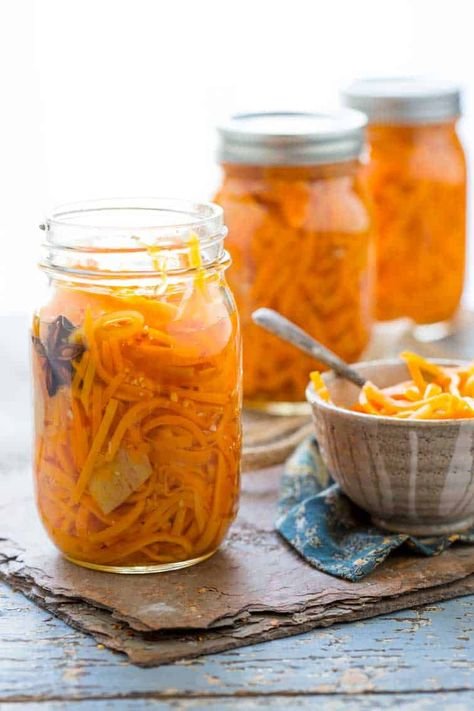
Fermented Pickles:
No list of fermented vegetables would be complete without pickles.
To make your own, choose small cucumbers and pack them into jars with fresh dill, garlic, and spices of your choice.
Prepare a brine using water, salt, and vinegar, then pour it over the cucumbers.
Seal the jars and let them ferment at room temperature for 3-7 days before refrigerating.
Homemade pickles are a crisp and flavorful snack on their own or alongside sandwiches and burgers.
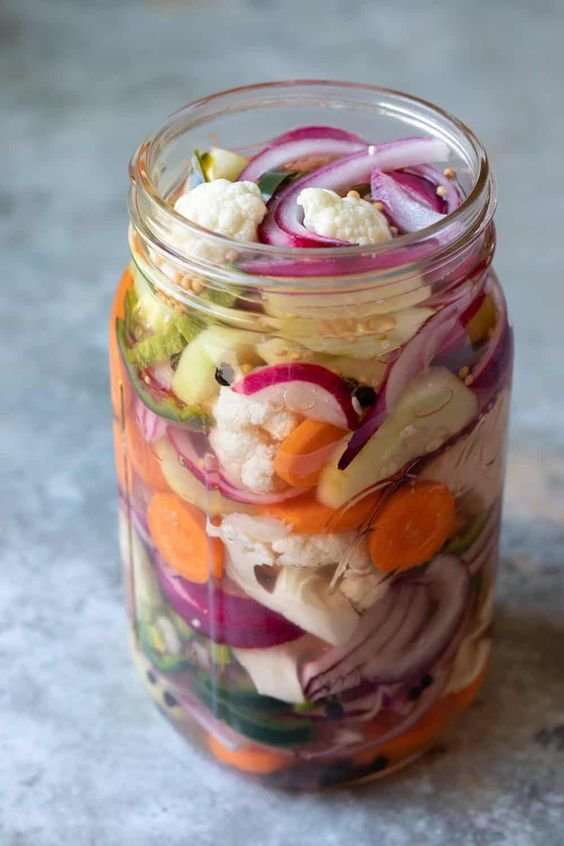
Beet Kvass:
For a probiotic-rich beverage, try fermenting beets to make kvass.
Simply chop beets into cubes and place them in a jar with salt and water.
Cover the jar with a cloth and let it ferment at room temperature for 3-7 days, stirring occasionally.
Once fermented, strain the liquid and transfer it to the fridge.
Beet kvass is a tangy and earthy drink that can be enjoyed on its own or used as a base for cocktails and salad dressings.
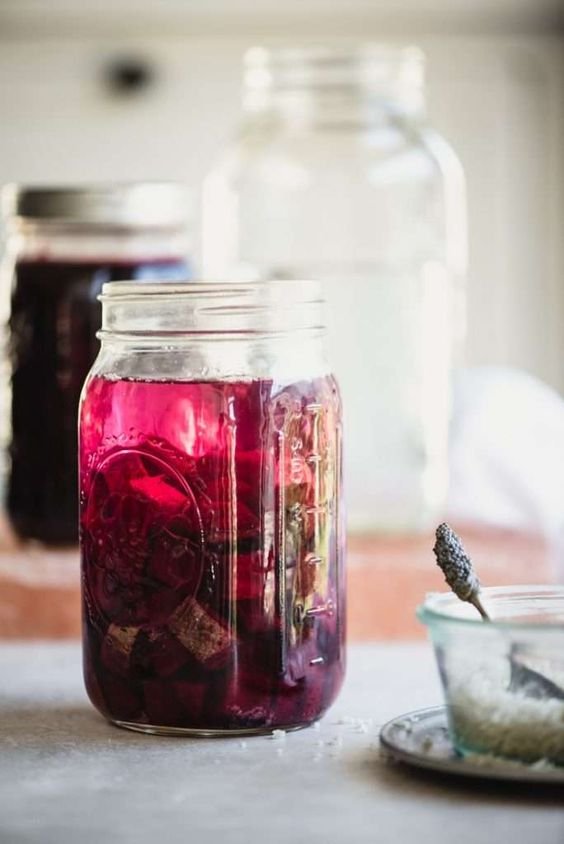
Fermented Salsa:
Give your salsa a probiotic boost by fermenting it at home.
Chop tomatoes, onions, peppers, and cilantro and mix them together in a bowl. Add garlic, lime juice, and salt to taste.
Transfer the mixture to jars, pressing down firmly to remove air bubbles.
Let it ferment at room temperature for 2-4 days before transferring to the fridge.
Fermented salsa adds a zesty kick to tacos, nachos, and grilled meats.
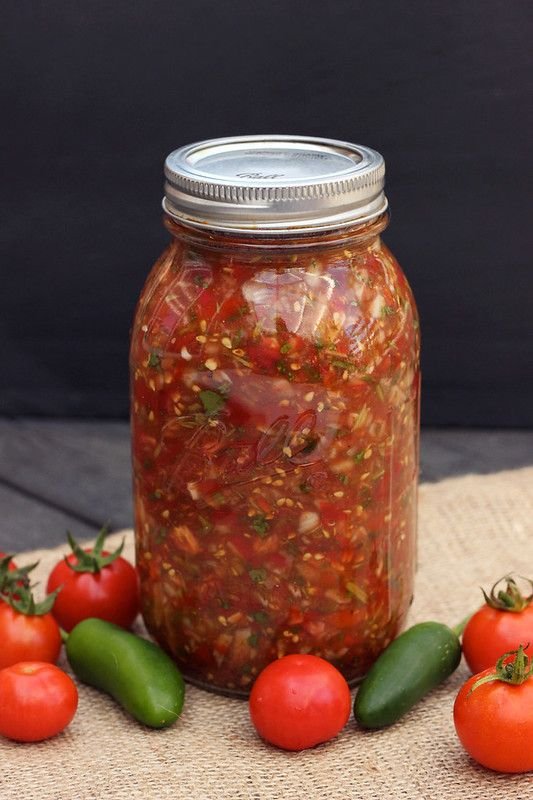
Fermented Green Beans:
Fermented green beans, also known as dilly beans, are a crunchy and tangy treat.
Pack trimmed green beans into jars with garlic, dill, and spices. Prepare a brine using water, salt, and vinegar, then pour it over the beans.
Seal the jars and let them ferment at room temperature for about a week before transferring to the fridge.
These flavorful beans are a delicious addition to salads and charcuterie boards.
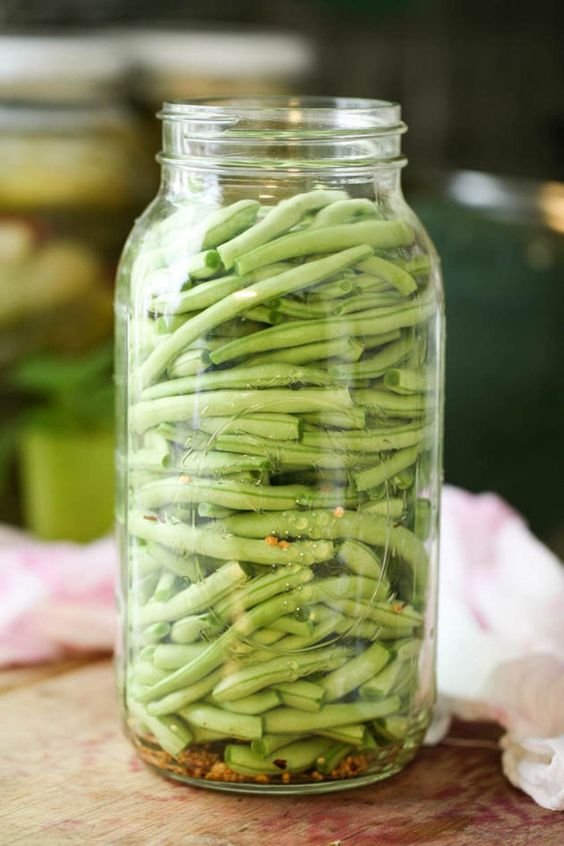
Fermented Cauliflower:
Transform ordinary cauliflower into a tangy delight by fermenting it with spices and herbs.
Cut cauliflower into florets and pack them into jars with garlic, turmeric, mustard seeds, and coriander.
Prepare a brine using water, salt, and vinegar, then pour it over the cauliflower.
Seal the jars and let them ferment at room temperature for 1-2 weeks before transferring to the fridge.
Fermented cauliflower makes a delicious snack or addition to veggie trays.
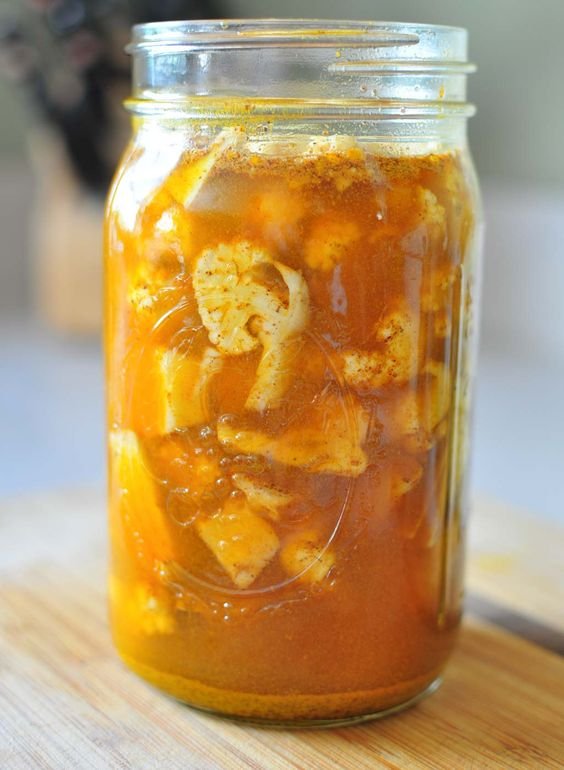
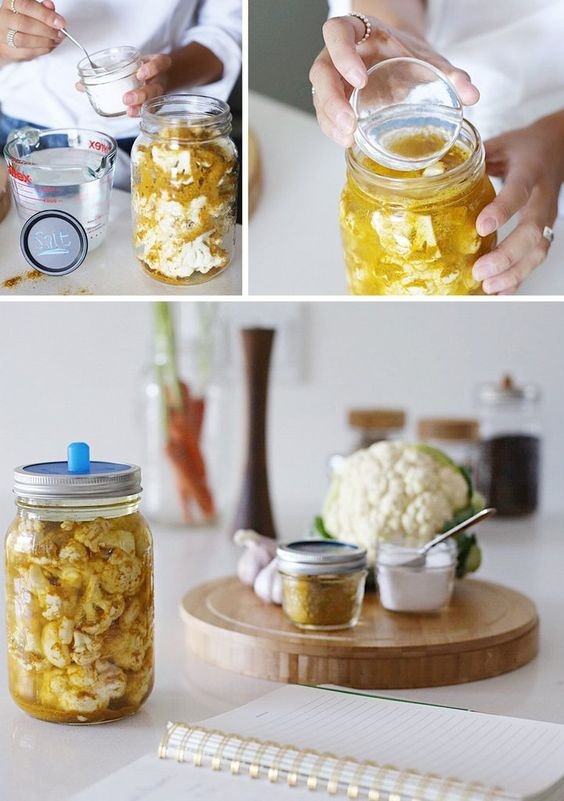
Classic Sauerkraut:
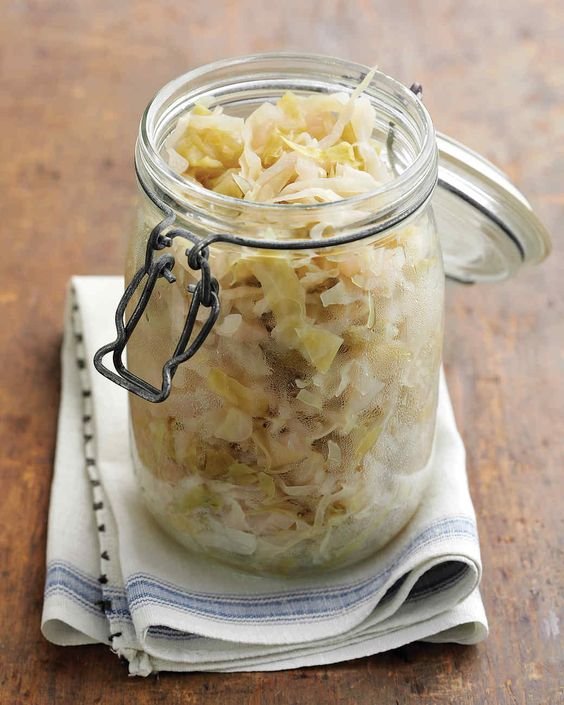
Ingredients:
- 1 medium-sized cabbage (green or red)
- 1 tablespoon sea salt or kosher salt
Instructions:
- Remove the outer leaves of the cabbage and reserve a couple for later.
- Shred the cabbage finely using a knife or mandoline.
- Place the shredded cabbage in a large mixing bowl and sprinkle salt over it.
- Massage the cabbage and salt together until the cabbage starts to release its juices.
- Pack the cabbage tightly into a clean glass jar, pressing it down firmly with your hands.
- Fold the reserved cabbage leaves and place them on top of the shredded cabbage to keep it submerged.
- Cover the jar loosely with a clean cloth or lid with an airlock.
- Let the sauerkraut ferment at room temperature for about 1-2 weeks, checking it every few days to ensure it stays submerged and taste-testing for your desired level of tanginess.
- Once fermented, remove the top leaves, cover tightly, and store in the refrigerator.
Kimchi:
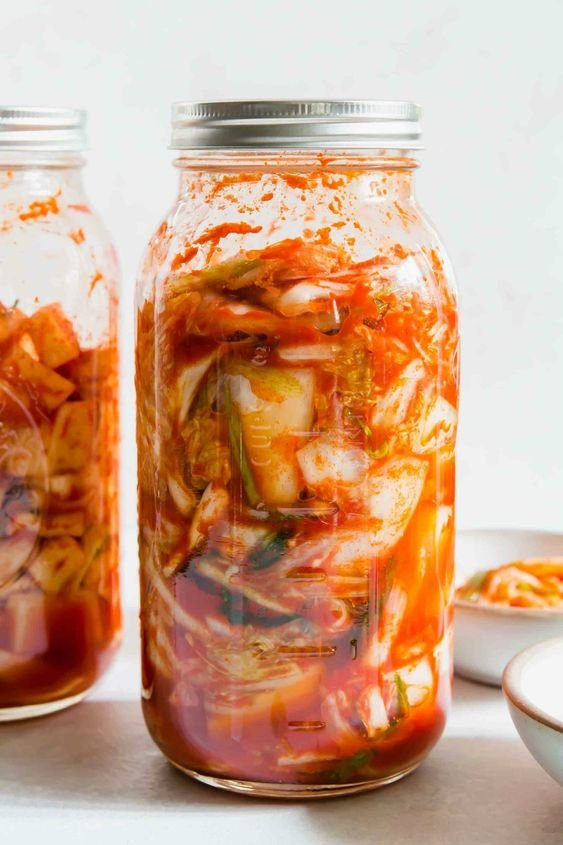
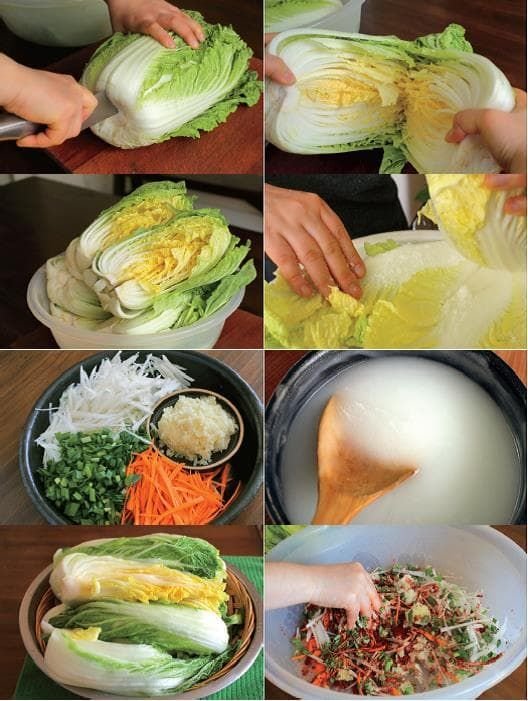
Ingredients
- 1 napa cabbage
- 1 daikon radish
- 2-3 carrots
- 4-6 cloves garlic, minced
- 1-inch piece of ginger, grated
- 2-3 tablespoons Korean chili flakes (gochugaru)
- 2 tablespoons fish sauce or soy sauce (optional for vegetarian/vegan)
- 1 tablespoon sea salt or kosher salt
Instruction
- Cut the napa cabbage into quarters, removing the core, and then chop it into bite-sized pieces.
- Peel and julienne the daikon radish and carrots.
- In a large mixing bowl, combine the chopped cabbage, daikon radish, carrots, garlic, ginger, chili flakes, salt, and fish sauce (if using).
- Massage the vegetables with your hands until they start to soften and release their juices.
- Pack the kimchi mixture tightly into clean glass jars, leaving some space at the top.
- Press down firmly to remove any air pockets and ensure the vegetables are submerged in their liquid.
- Seal the jars with lids or use an airlock system.
- Let the kimchi ferment at room temperature for 2-5 days, depending on your preference for fermentation level and taste.
- Once fermented, transfer the jars to the refrigerator to slow down the fermentation process. Enjoy your homemade kimchi with rice, noodles, or as a side dish.
Fermented Carrots:
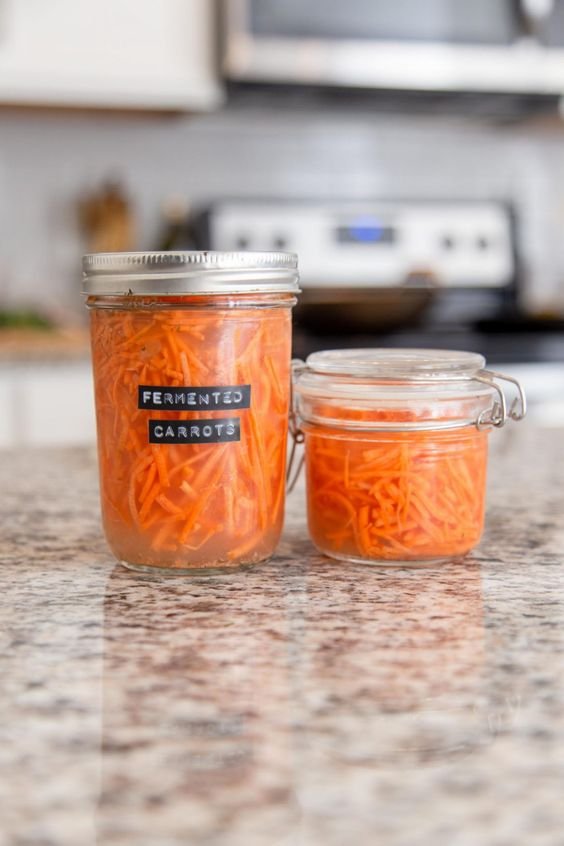

Ingredients
- 1 pound carrots, peeled and sliced into sticks or rounds
- 2-3 cloves garlic, smashed
- 2-3 sprigs fresh dill
- 1 teaspoon mustard seeds
- 1 teaspoon whole black peppercorns
- 2 cups filtered water
- 1 tablespoon sea salt or kosher salt
- 1 tablespoon apple cider vinegar (optional)
Instruction
- Pack the sliced carrots, garlic, dill, mustard seeds, and black peppercorns into a clean glass jar.
- In a separate bowl, mix the water, salt, and apple cider vinegar (if using) to create the brine.
- Pour the brine over the carrots, ensuring they are fully submerged.
- Place a weight on top of the carrots to keep them submerged (a small glass jar filled with water works well).
- Cover the jar loosely with a clean cloth or lid with an airlock.
- Allow the carrots to ferment at room temperature for about 1-2 weeks, depending on your preference for flavor.
- Once fermented, remove the weight, seal the jar tightly, and store in the refrigerator. Enjoy your tangy fermented carrots as a snack or as a flavorful addition to salads and sandwiches.
Frequently Ask Question
Qus -What vegetables are best to ferment?
Ans – The best vegetables to ferment are those that hold their shape and develop unique flavors through the fermentation process. Popular choices include cabbage (for sauerkraut and kimchi), cucumbers (for pickles), carrots, radishes, beets, and green beans. These vegetables ferment well and offer a wide range of flavors and textures.
Qus – What are the top 5 fermented foods?
Ans –
The top 5 fermented foods are:
- Yogurt: A cultured dairy product rich in probiotics.
- Kimchi: A spicy Korean fermented cabbage dish.
- Sauerkraut: Fermented cabbage with a tangy flavor.
- Kombucha: A fermented tea with a slight fizz.
- Miso: A Japanese fermented soybean paste used in soups and marinades.
Qus – What goes well with fermented vegetables?
Ans – Fermented vegetables pair well with a variety of dishes, adding a burst of flavor and tangy acidity. They complement grilled meats, roasted vegetables, sandwiches, and wraps. Serve them alongside cheese and charcuterie boards or mix them into grain bowls and salads for extra crunch and a probiotic boost.
Conclusion-
Fermented vegetables are a versatile and nutritious addition to any diet, offering a delightful range of flavors, from tangy and tart to spicy and earthy. These foods are rich in probiotics, which support gut health, and they can easily be made at home with simple ingredients and a bit of patience. Whether you enjoy classic sauerkraut, spicy kimchi, or fermented carrots and pickles, the key is to experiment with different combinations of vegetables, herbs, and spices to create unique flavors. By incorporating fermented vegetables into your meals, you not only enhance your dishes but also contribute to a healthier gut microbiome.



